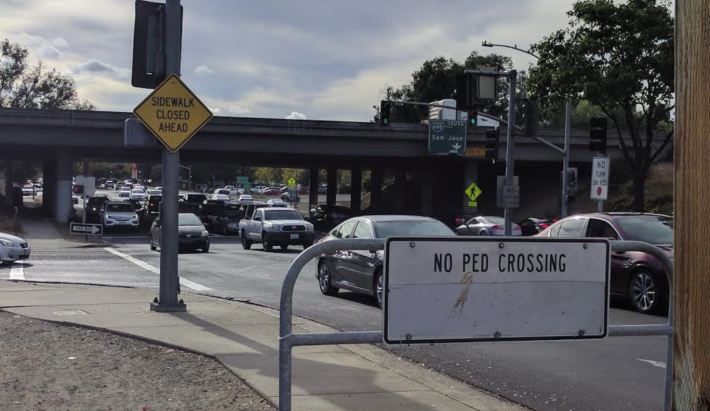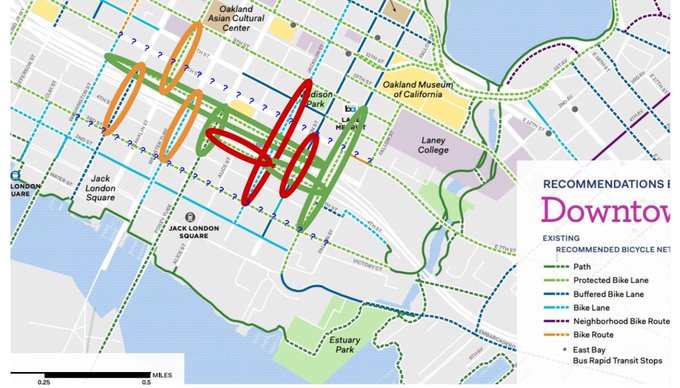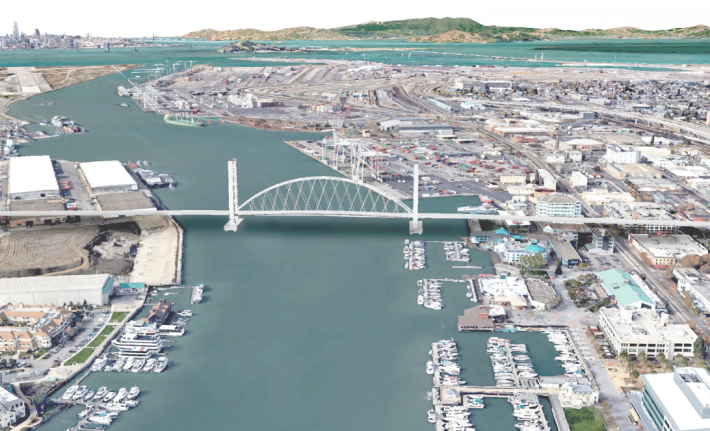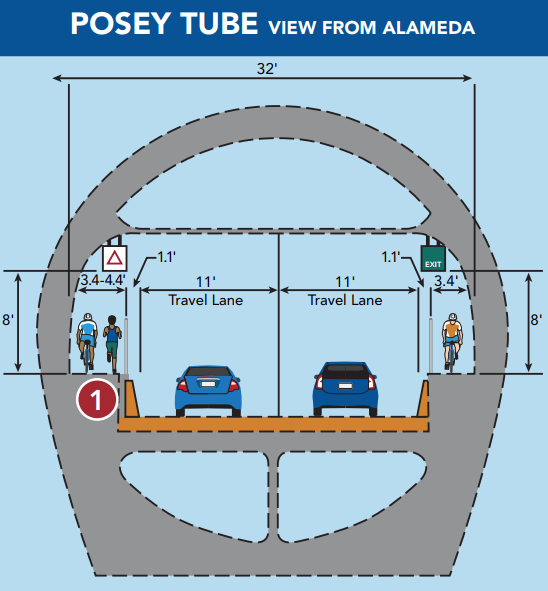The Mayor of the city of Alameda, Marilyn Ezzy Ashcraft, does not believe the Oakland Alameda Access Project (OAAP), will fulfill its stated goal to better connect her city with Oakland. OAAP is a $75 million Caltrans and Alameda County joint project to reconfigure the auto connections between the Nimitz Freeway in Oakland and the Webster and Posey tubes to Alameda.
In a letter to Lindsay Vivian, Chief, Office of Environmental Analysis, Caltrans District 4 and Trinity Nguyen, Director of Project Delivery Alameda County Transportation Commission, Ashcraft wrote that the project will not "...improve transit, bicycle or pedestrian access between Alameda and Oakland, and will not reduce overall automobile traffic, congestion, or the greenhouse gas emissions generated by automobile travel between Alameda and Oakland."
Advocates, such as John Bauters, a Councilmember for the City of Emeryville and a commissioner with the Bay Area Air Quality Management District, were quick to back up the sentiment with a tweet that includes the full contents of Ashcraft's letter. Bauters is also vice chair of the Alameda County Transportation Commission (ACTC), one of the partners on the project:
As the vice chair of ACTC, few letters have put as bright of a smile on my face as this one did. I support Mayor Ezzy-Ashcraft and the City of Alameda in their demand that the active transportation components that were promised be delivered. https://t.co/ZtGAi3j9Ze
— Mayor John J. Bauters 🏳️🌈 (@JohnBauters) October 21, 2020
As seen in the letter, Ashcraft does support some portions of the project planned for Oakland, including removing the Broadway offramp through Oakland's Chinatown and re-configuring other ramps to directly connect the tunnels to the freeway, to remove through traffic from Chinatown's streets.
However, as Streetsblog previously pointed out, it's clear the goal of the designs has nothing to do with a desire to make Chinatown streets safer or help reconnect neighborhoods. The traffic planners who created the project also want to widen and lengthen the Oak Street off-ramp to make sure just as many cars end up traveling through Chinatown, just from a different direction. The project also includes removing a sidewalk entirely from a section of Jackson Street, so motorists on their way from Alameda to the Nimitz Freeway won't be delayed by those pesky pedestrians crossing fifth street.

Bike lanes in the project are clearly designed as sops, put there because Caltrans is under enormous pressure to include "complete streets" elements in new projects. That's why, as seen in the lead image, "improved" bike and ped paths in the tunnel are featured in the design, even though bike advocates of all stripes have panned this part of the plan as ludicrous, given the pollution and intense noise in the tube (note the picture of the jogger running in the Posey Tube, an almost laughable depiction).
Robert Prinz of Bike East Bay was also critical of the bikeways proposed for the Oakland side of the project. "The proposal in the Environmental Impact Report builds 3 of the bikeways from the Oakland bike plan (green), blocks 3 more (red), and ignores 3 (orange). It also ignores 2 important potential east-west bike connections (3rd St & 7th St)," he wrote in a post on social media, along with this map:

And Denyse Trepanier of Bike Walk Alameda summed it up simply in this tweet:
As reported previously, the OAAP is being developed by the same people who built a traffic hellscape in the Jingletown portion of Oakland, where local streets were replaced by massive aerial ramps that are absolutely hostile to anyone not in a car or truck. These planners have already proven they are not qualified (or not interested) in improving conditions for people who bike, walk or take public transportation. The newly released environmental documents for the OAAP, as well as previous iterations, clearly shows that.

In Streetsblog's view, huge sums of billable hours have been wasted on designs and outreach with nothing useful to show for it. The OAAP should be scrapped and its funds redirected towards building a pedestrian and bicycle lift bridge over the estuary. OaklandDOT should also be given a portion of the money towards making Chinatown streets safer and completing existing plans to build protected bike lanes and safe pedestrian infrastructure between downtown and Jack London Square.
Editor's Note: in the interest of full disclosure, the writer of this blog, Roger Rudick, lives close to this project.





